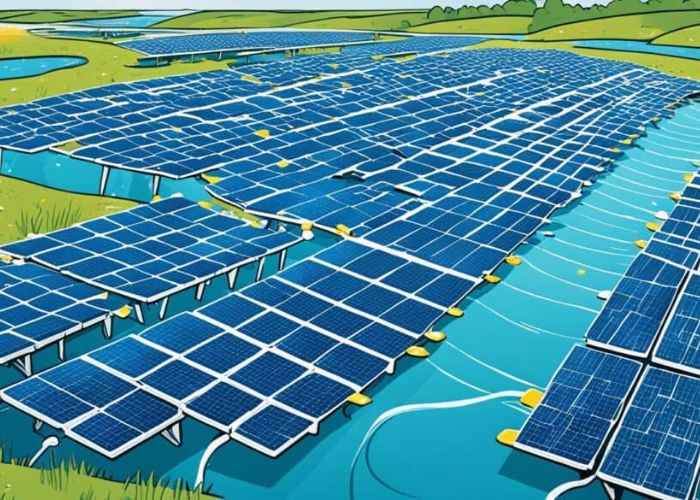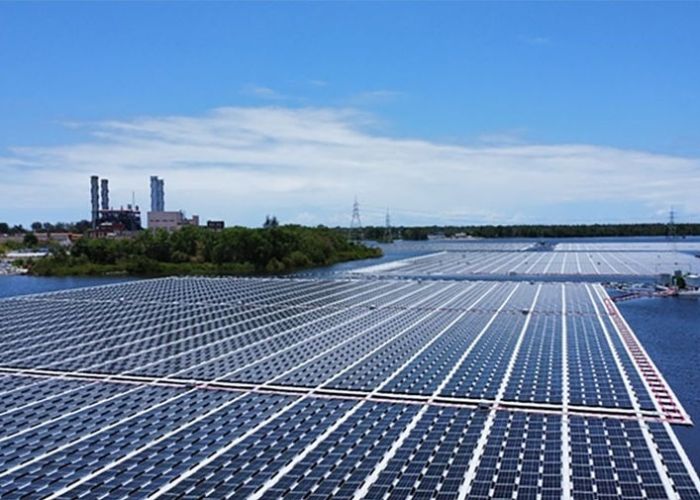Solar power has grown tremendously, particularly in China, during my seven years of experience as an analyst for the energy sector monitoring renewable energy projects globally. After completing dozens of large-scale solar farms in the past few years, the country is now at the forefront of this industry. The Tengger Desert Solar Park in Ningxia province, northwest China, is the showpiece. Let’s read below about “Tengger Desert Solar Park – China’s Largest Solar Project Overview”.
The largest operational solar park in the world, with a 2,000 MW generating capacity, is located in the Tengger Desert. The $3 billion project began operations in 2019 and was finished in 2021. Covering an area of about 27 square kilometers, it has more than 5 million solar panels. It’s more than four thousand American football fields!
Tengger Desert Solar Park – China’s Largest Solar Project Overview
Seeing this technical wonder firsthand was a recent opportunity I had during my tour of Tengger Desert Solar Park. From my vantage point on the ground, I will detail the origins, construction, and ongoing operations of China’s revolutionary solar energy project in this blog.
Origins of the Tengger Desert Solar Park
The energy consumption in China has skyrocketed in the last several decades, driven by the country’s phenomenal economic expansion. It was neither economically nor ecologically viable to generate enough power with conventional coal plants. An eco-friendly and economical option was solar power.
The Tengger Desert region was chosen as the site for China’s first solar park because of its favorable sunlight conditions and proximity to transmission lines that can carry electricity to major cities like Beijing. The cooperation between the Ningxia government and China Power Investment Corp, one of the country’s largest energy corporations, began planning in 2016.
The project’s buildout took place in two 1,000MW stages, with construction starting in 2017. This permitted the first part to begin operations in 2019 even though the second part was still in the works. Two years later, in 2021, the whole 2,000MW plant was finished.
How the Tengger Solar Park Works
A system of high-efficiency monocrystalline PERC photovoltaic modules installed on single-axis trackers is used by the Tengger Desert Solar Park to track the sun’s daily passage across the sky. In this way, the panels can soak up as much sunshine as possible.
Read More:- Three Gorges Dam – China’s Leading Hydroelectric Power Station Update
The energy generated by the solar panels is sent to an adjacent inverter station, where it is transformed from DC, or direct current, to AC, or alternating current, in order to be sent on the grid. The alternating current (AC) power is collected underground and sent to one of three substations on the premises, where it is upgraded to 500 kilovolts (kV).
A converter station on the border between the provinces of Ningxia and Henan receives the power after it has been sent 140 miles overhead. Solar power is transmitted to major cities like Guangzhou, Beijing, and Shanghai via regional ultra-high voltage DC power lines, which are subjected to an additional 800 kV voltage boost here.
Key Stats on the Tengger Desert Solar Park
Tengger Desert Solar Park is one of the largest solar energy plants in the world, and its sheer vastness is mind-boggling. Here are a few important pieces of information:
- 5 million solar panels
- 27 square kilometers of land
- 2,000 MW of generation capacity
- 3.2 billion kWh of annual electricity production
- Powers approximately 1 million Chinese homes
- Offset of 2.74 million tons/year of CO2
- 140 mile 500 kV transmission connection
- $3 billion total investment

Seeing the Solar Park in Action
The solar park’s immensity struck me as I walked the property. As far as the eye could see, there were endless rows of panels. While I was there, the high desert sun pounded on the black solar arrays, and the sky was a perfect blue.
Read More:- Kashiwazaki-Kariwa – Japan’s Biggest Nuclear Power Plant Updates
A flurry of activity filled the park. While operations staff ran the command center, monitoring specialists went about inspecting machinery. The last pieces were being completed by the construction staff. The enormous inverter stations and substations that dot the terrain were visible to me.
The single-axis trackers’ ability to rotate in response to changes in the sun’s trajectory was fascinating to see. I had no idea how much planning and cooperation went into running and maintaining such a massive facility until I saw the plant in operation.
The Importance of Tengger Desert Solar Park
China must strike a delicate balance between meeting the energy needs of its 1.4 billion people and decreasing its reliance on fossil fuels. The Tengger Desert Solar Park is a symbol of the country’s dedication to a greener energy future and the biggest operational solar installation in the country.
The facility has the potential to produce 3.2 billion kWh of clean energy per year once it is fully operational. That would be sufficient to offset 2.74 million tons of CO₂ annually and power one million people.
Building a solar park of this size in the middle of nowhere is another demonstration of China’s engineering prowess. It helps them become more proficient in developing projects for renewable energy. Solar power has a bright future, and Tengger Desert Solar Park is a great example of that.
Conclusion
Seeing the Tengger Desert Solar Park up close was a mind-blowing event. It is one thing for an energy expert to peruse reports regarding massive renewable project details. Seeing a facility of this size in person allows one to really grasp the level of ingenuity and cooperation needed to construct and run it.
In the decades to come, China will confront enormous environmental and energy challenges. The dedication and technical prowess shown by the Tengger Solar Park are sufficient to confront these issues directly. For future solar energy projects in China and beyond, this one should serve as a model. I hope you like reading “Tengger Desert Solar Park – China’s Largest Solar Project Overview”.

Mohsen Ali is a Chemical Engineer with over a decade of experience in the energy sector. Specializing in power plant efficiency and sustainability, he brings expert insights to borderpowerplants.org. Mohsen holds a Master’s degree in Chemical Engineering and is dedicated to advancing sustainable energy solutions. Connect with him on Instagram or LinkedIn for more insights.
